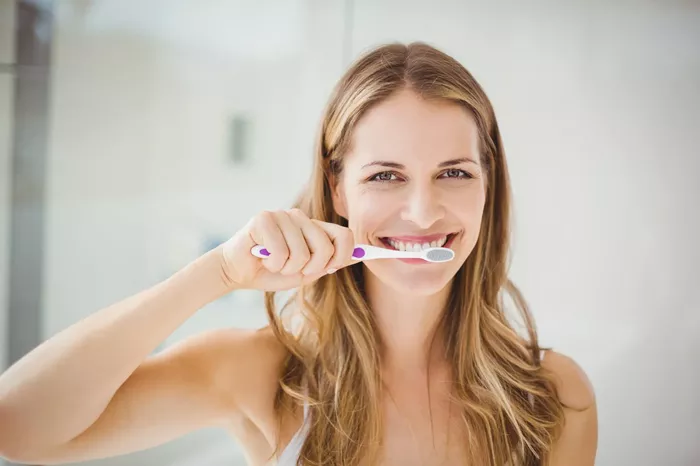Buccal fat removal is a popular cosmetic procedure aimed at contouring the face by reducing the size of the buccal fat pads located in the cheeks. Post-operative care is crucial to ensure optimal results and minimize complications. One common question patients have is whether they can brush their teeth after undergoing buccal fat removal. This article will explore the guidelines and best practices for oral hygiene following this procedure.
Understanding Buccal Fat Removal
What is Buccal Fat Removal?
Buccal fat removal is a surgical procedure designed to create a slimmer facial appearance by removing the buccal fat pads. These fat pads are located between the cheekbones and jawbones. The procedure is relatively simple and involves making small incisions inside the mouth to access and remove the fat pads.
Benefits of Buccal Fat Removal
Enhanced Facial Contours: Buccal fat removal can enhance cheekbone definition and create a more sculpted look.
Improved Confidence: Many patients feel more confident with their appearance after the procedure.
Minimally Invasive: The surgery is performed through small incisions inside the mouth, resulting in no visible scars.
Risks and Considerations
Swelling and Bruising: Common side effects include swelling and bruising, which usually subside within a few weeks.
Infection: There is a risk of infection, which can be minimized by following post-operative care instructions.
Nerve Damage: Rarely, nerve damage can occur, leading to temporary or permanent numbness in the cheeks.
Post-Operative Care
Immediate Post-Operative Instructions
Rest and Recovery: Patients should rest and avoid strenuous activities for at least a week.
Ice Packs: Applying ice packs to the cheeks can help reduce swelling and discomfort.
Medications: Pain relievers and antibiotics may be prescribed to manage pain and prevent infection.
Importance of Oral Hygiene
Maintaining good oral hygiene is essential after buccal fat removal to prevent infection and promote healing. However, patients must be careful when brushing their teeth to avoid disturbing the surgical sites.
See also: Top 5 Cheapest Countries to Get Buccal Fat Removal
Brushing Your Teeth After Buccal Fat Removal
When Can You Start Brushing?
Immediate Post-Op Period: In the first 24 hours after surgery, patients should avoid brushing their teeth to prevent irritation and bleeding.
First Few Days: After the initial 24 hours, patients can gently brush their teeth, avoiding the surgical areas. Use a soft-bristled toothbrush and be cautious around the incisions.
How to Brush Your Teeth Safely
Use a Soft-Bristled Toothbrush: A soft-bristled toothbrush is gentle on the gums and surgical sites.
Be Gentle: Brush gently to avoid disrupting the stitches and causing bleeding.
Avoid Incision Sites: Take extra care to avoid brushing directly over the incision sites inside the mouth.
Rinse with Antiseptic Mouthwash: An antiseptic mouthwash can help keep the mouth clean without requiring vigorous brushing.
Other Oral Hygiene Tips
Saltwater Rinse: Rinse your mouth with a warm saltwater solution several times a day to reduce bacteria and promote healing.
Avoid Hard and Crunchy Foods: Stick to soft foods to minimize irritation to the surgical sites.
Hydration: Drink plenty of water to keep your mouth moist and support the healing process.
Long-Term Oral Hygiene After Buccal Fat Removal
Maintaining Results
Healthy Diet: A healthy diet rich in vitamins and minerals supports overall health and maintains the results of buccal fat removal.
Regular Dental Check-Ups: Regular visits to the dentist ensure that your oral health is monitored and maintained.
Recognizing Complications
Signs of Infection: Redness, swelling, or discharge from the incision sites may indicate infection. Contact your surgeon if you notice these symptoms.
Numbness or Pain: Persistent numbness or pain should be evaluated by your surgeon to rule out nerve damage or other complications.
Conclusion
Buccal fat removal can significantly enhance facial contours and boost confidence. Post-operative care, including proper oral hygiene, is essential to ensure successful healing and optimal results. Patients can brush their teeth after buccal fat removal, but they must follow specific guidelines to avoid complications. By using a soft-bristled toothbrush, being gentle, and avoiding the incision sites, patients can maintain good oral hygiene without jeopardizing their recovery. Always follow your surgeon’s instructions and consult them with any concerns during the healing process.
Common Concerns and FAQs
What If I Experience Bleeding?
Minor Bleeding: Some minor bleeding is normal in the first few days. If bleeding occurs, rinse your mouth gently with cold water and avoid brushing the affected area.
Persistent Bleeding: If bleeding persists or is excessive, contact your surgeon immediately for advice.
Can I Use Mouthwash?
Non-Alcoholic Mouthwash: Use a non-alcoholic mouthwash to avoid irritation and dryness in the mouth.
Prescription Mouthwash: Your surgeon may prescribe a medicated mouthwash to prevent infection and aid healing.
When Can I Resume Normal Brushing?
Gradual Resumption: You can gradually resume normal brushing as the incisions heal, typically within two weeks. Continue to be gentle and avoid vigorous brushing.
Related topic:
How Much Is Chin Lipo Buccal Fat Removal?
Is Buccal Fat Removal Reversible?
What is Buccal Fat Removal for Male?


